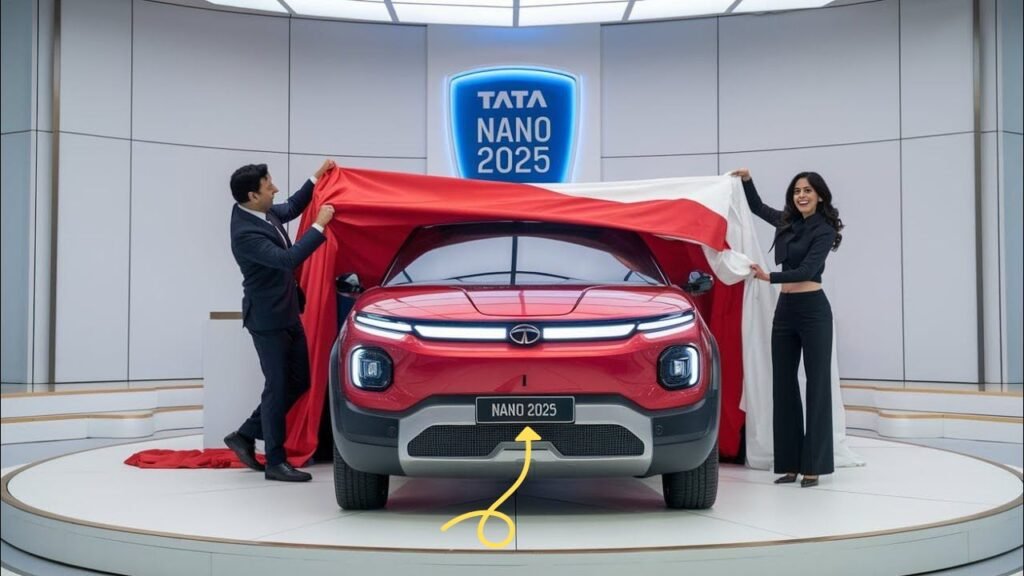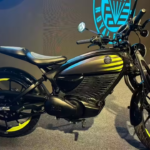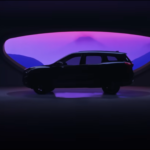
Tata Nano EV 2025: The Icon Returns as India’s Most Affordable Electric Car
Table of Contents
Tata Nano EV : India’s automotive landscape is evolving rapidly with the electric vehicle (EV) revolution gaining momentum across the country. Amidst rising fuel prices and growing environmental concerns, EVs have emerged as a practical and sustainable solution. And now, the most iconic name in India’s budget car history is set to make a powerful comeback—Tata Nano, reimagined as the Tata Nano EV 2025.
Once celebrated as the world’s cheapest car, the Tata Nano is now aiming to be India’s most affordable electric car, blending nostalgia with innovation. Let’s explore everything we know about the 2025 Tata Nano EV—its design, performance, features, expected pricing, and why it could disrupt the EV market once again.

A Compact Electric Marvel
The original Tata Nano was designed with one goal: to provide every Indian family with a car. While it was discontinued in 2018 due to various challenges, the Nano left behind a legacy. In 2025, Tata Motors plans to revive this legend, not just as a car—but as a modern city electric vehicle, perfect for daily urban commuting.
The new Nano EV will stay true to its compact footprint, making it ideal for crowded Indian roads, tight parking spaces, and city maneuverability. However, this time it will come with sleek updates, a futuristic design, and the zero-emission performance today’s buyers demand.
Expected Design & Styling
The 2025 Nano EV will retain the tall-boy silhouette and short overhangs of the original, but with EV-specific enhancements like:
- Closed front grille with blue EV accents
- LED headlamps and taillights for a modern look
- Redesigned bumpers and aerodynamic wheels
- Subtle use of chrome or brushed metal finishes
- Two-tone paint options with black roof variants
Inside, the cabin will get a significant upgrade. Expect better seat materials, a digital instrument cluster, and an infotainment touchscreen in higher variants. Despite its size, Tata aims to keep the interior functional, ergonomic, and surprisingly spacious.
Performance & Battery Specifications (Expected)
While official specifications are awaited, industry insiders expect the Tata Nano EV to be powered by:
- A 19–21 kWh lithium-ion battery pack
- Driving range of around 200–250 km per charge (ideal for daily city usage)
- Permanent Magnet Synchronous Motor (PMSM) or BLDC motor
- Top speed of 80–100 km/h
- 0–60 km/h acceleration in under 10 seconds
The battery will likely be IP67 rated (water and dust-resistant), and fast-charging compatible—taking the battery from 10% to 80% in under 60 minutes via a DC fast charger. Regular AC home charging will take 6–7 hours.
Key Features
The 2025 Tata Nano EV will be feature-rich for its segment, offering:
- Digital speedometer & infotainment screen
- Steering-mounted controls
- Bluetooth, USB, and smartphone connectivity
- Power windows, keyless entry, reverse camera
- Dual airbags, ABS with EBD, and parking sensors for safety
Some higher trims may even offer connected car features via Tata’s iRA platform, OTA (Over-The-Air) updates, and eco-driving modes.
Affordability with Purpose
Tata aims to price the Nano EV below ₹6 lakh (ex-showroom), making it India’s most affordable electric car. With government subsidies and FAME II benefits, the on-road price in many states could drop further—bringing EV ownership within reach of India’s middle class and two-wheeler upgraders.
This would position the Nano EV significantly below the Tata Tiago EV (₹7.99 lakh starting price), offering first-time buyers an entry into the EV segment at a much lower cost.
Target Audience & Market Impact
The Tata Nano EV is designed for:
- Urban commuters needing a small, eco-friendly car
- Families looking for a second vehicle
- College students and working professionals
- Fleet operators, e-commerce delivery partners, and ride-share companies
Given Tata’s existing dominance in the EV space with the Nexon EV, Tiago EV, and Punch EV, the Nano EV could cement its leadership further by catering to the budget-conscious urban buyer.
Launch Timeline
While Tata Motors has not confirmed a launch date, the Tata Nano EV is expected to be unveiled in late 2025, with deliveries starting soon after. Prototype testing is reportedly underway, with early images and leaks suggesting the project is in an advanced stage.
Also Read : Bharat NCAP Crash Tests: Top 5 Safest Cars in India (2025 Edition)
Conclusion: A Revolutionary Comeback
The Tata Nano EV 2025 is more than just an electric car—it’s the return of an icon. It promises to deliver affordability, sustainability, and practicality in a single, compact package. If Tata delivers on expectations, the Nano EV could do for electric mobility what the original Nano did for car ownership—make it accessible to millions.
In a country where urban congestion, pollution, and fuel prices are everyday challenges, the Tata Nano EV may well become the next big step in India’s clean mobility journey.
Related posts


Mahindra XUV 7XO: The XUV700 Facelift with Major Design & Feature Upgrades Expected in 2026

New-Gen Maruti Suzuki Brezza Spotted Testing: Features & Upgrades We Expect in 2026 Model





